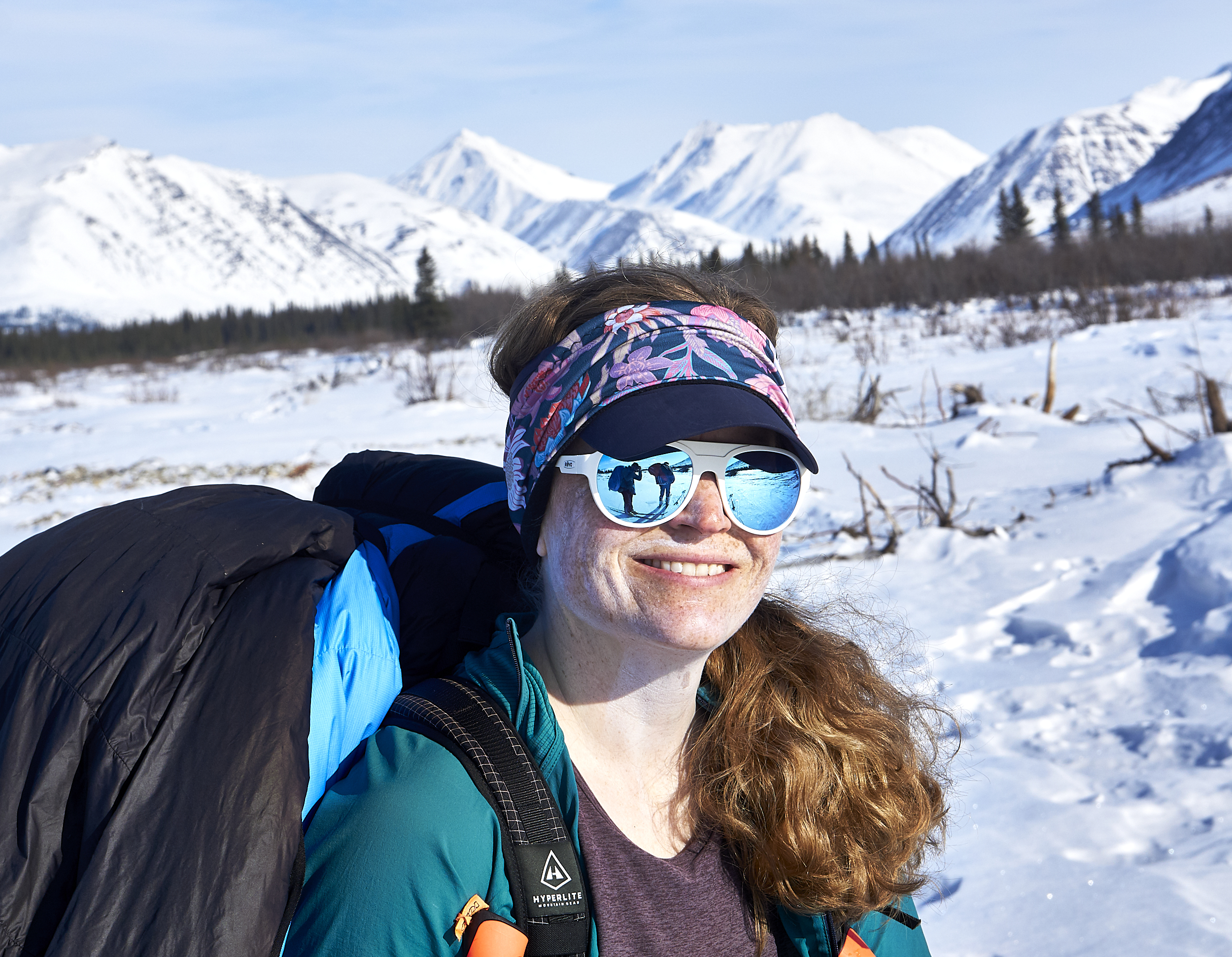
Howling pierced the morning quiet
By Katie Strong
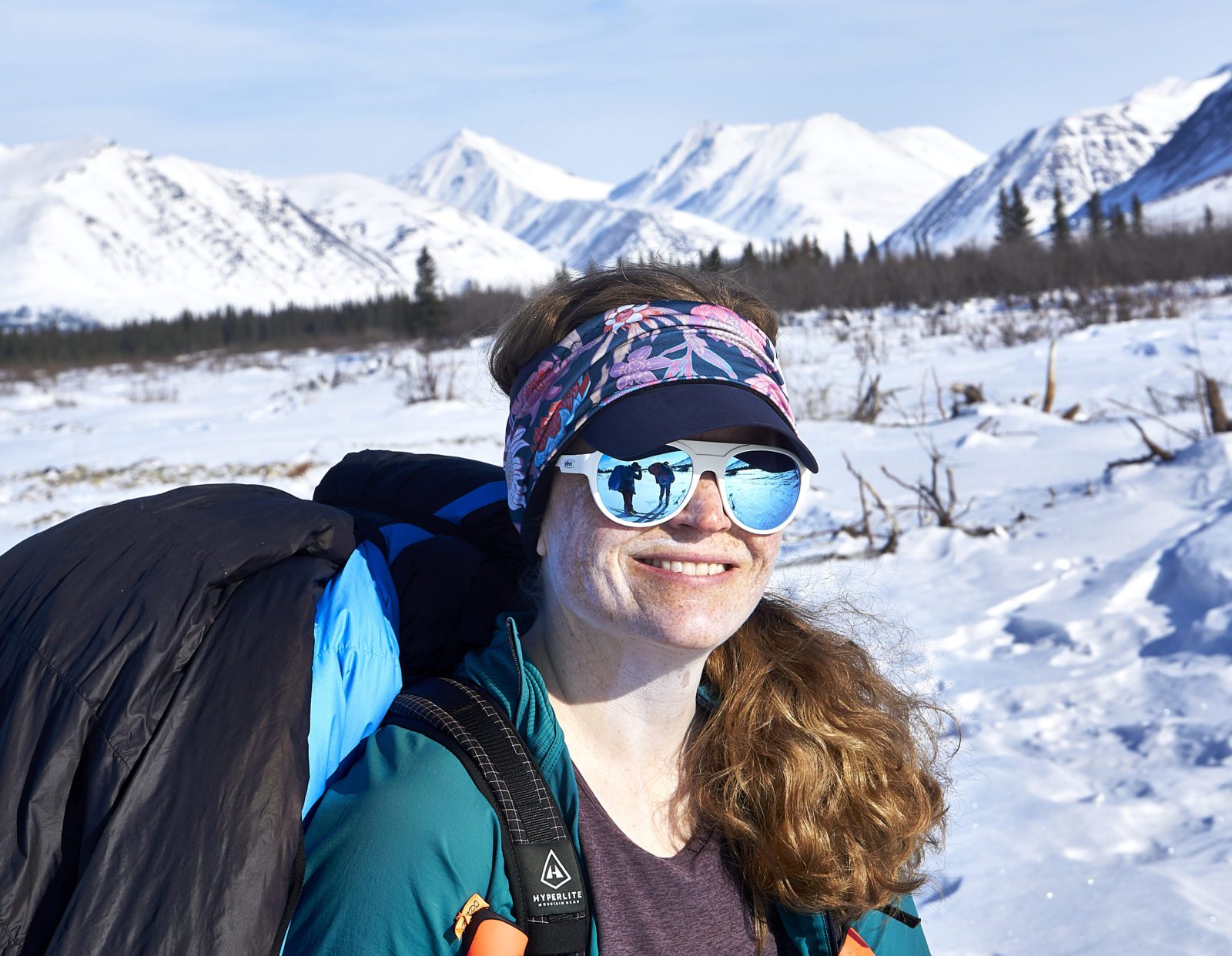
Howling pierced the morning quiet. We looked up the hillside and saw a pack of five or six wolves. We spent the next half hour watching their movements. They continued howling while we continued skiing.
My friends and I were participating in the Alaska Mountain Wilderness Ski Classic, often called the Winter Classic for short. The event has gathered skiers together to experience wild corners of Alaska for almost as long as I’ve been alive. Often traveling in groups of two or three, participants pick their own route between the start and finish. This year, we were in the Brooks Range, traversing a portion of Gates of the Arctic National Park, connecting Galbraith Lake and Wiseman (watch footage of their trip at https://www.youtube.com/watch?v=BoYKceYtyuU).
This was my seventh Winter Classic, and the first since the birth of my daughter. Contemplating the trip beforehand, I felt rusty and uncertain. It’d been almost four years since I’d done anything comparable. Did I really want to take the time away from my family? Would I feel comfortable enough in the remote terrain to enjoy the trip?
My ski partner is about to become a parent himself, and my desire to do a trip with him before he becomes a new dad won out over all my worries. By the time we flew north, I bounced up and down in my seat along to Taylor Swift’s “Message in a Bottle” as I looked out at the broad valleys and craggy peaks we were about to ski through.
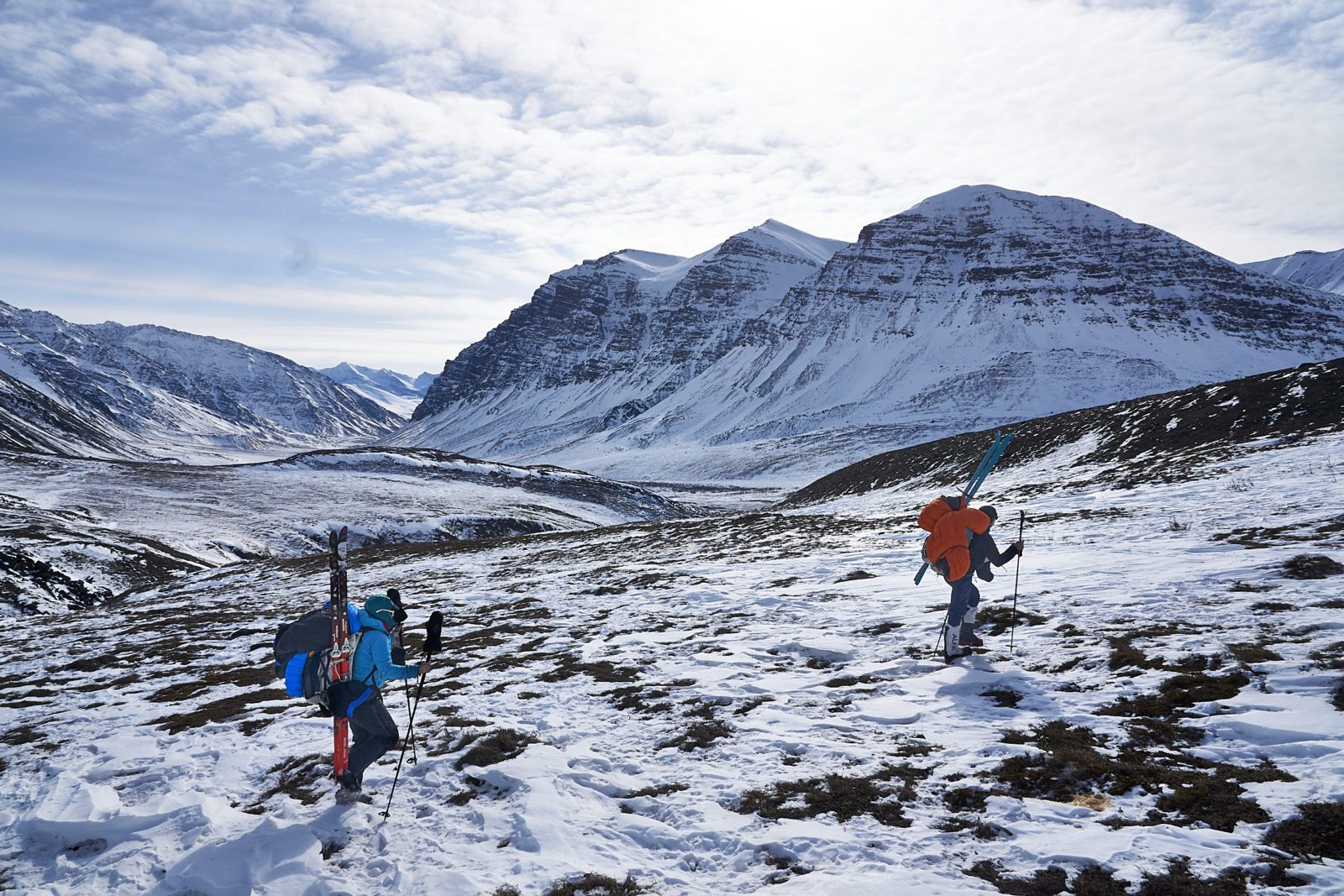
Cold defined the journey
The temperatures fell firmly below zero as we set off in the middle of a sunny April day. Cold would define our trip—it would dictate when we set up camp, how we moved through the day, even how much we needed to eat. I shivered through the coldest of the nights, and I feared for my wooden-feeling toes each morning.
It was so worth it. Gates of the Arctic is spectacular, and so full of life. Even in late winter, caribou, wolf, fox, lynx and even bear tracks crisscrossed the valleys on the north side of the range. Wolverine tracks led us up the mountain passes. On the south side, moose trails made trail breaking a bit less difficult, and song birds flitted between trees, lifting our spirits.
Ephemeral and rejuvenating
Time in wild places reminds me of how ephemeral everything is, and how full of contradictions—and how to be okay with all that. This trip was no different. A brutally cold morning skiing up a mountain pass in my parka yielded to a warm, sunny afternoon taking a break on dry tundra, which gave way to a stiff wind pushing us down a river of glare ice in the evening.
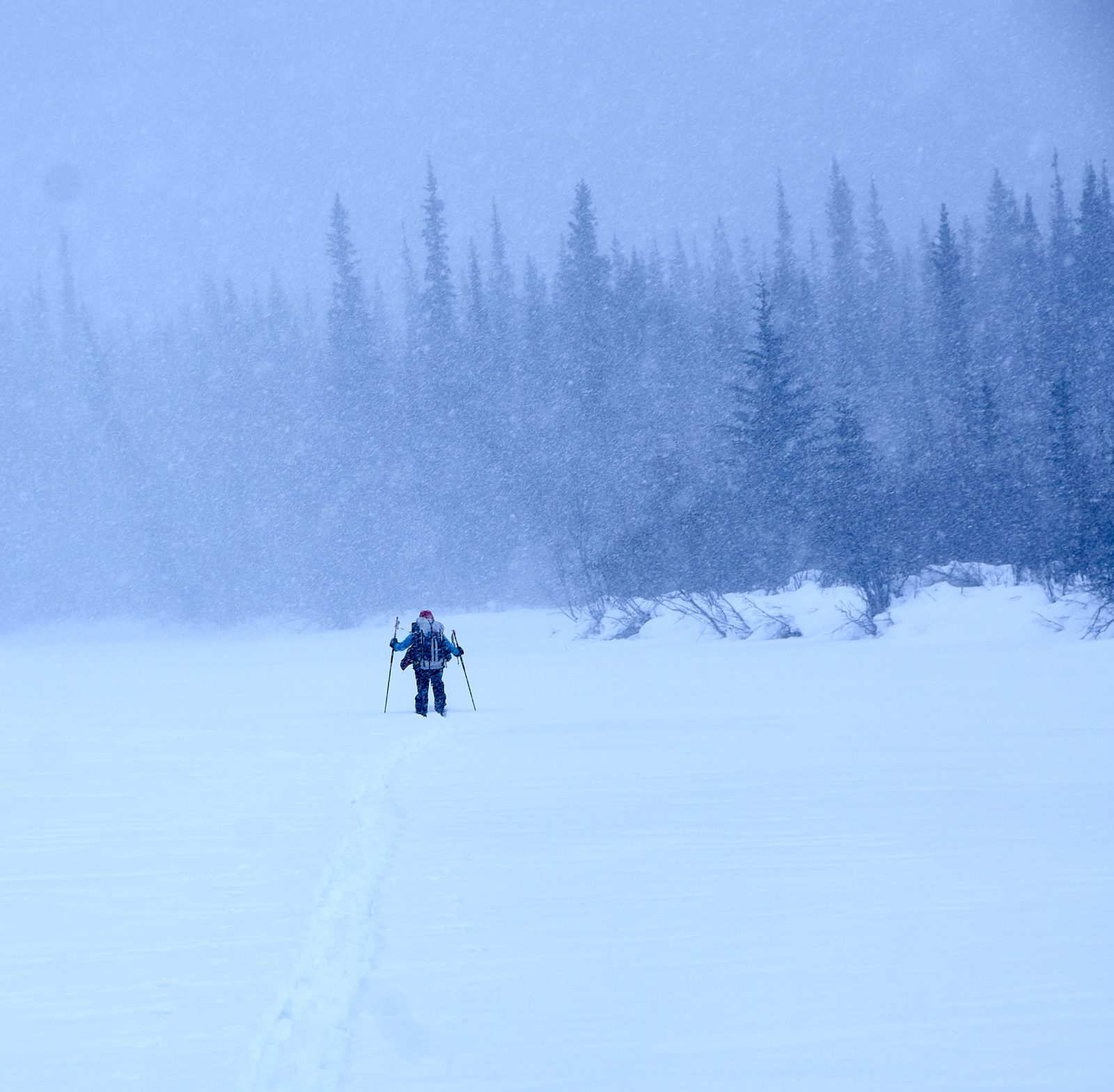
Wallowing in deep sugar snow led to miles of skate skiing across windswept lakes. Feelings of elation turned into despair and then to conviction; laughter, tears, awe, overwhelm all swirled together. By our last day, out of food and taking turns breaking trail over a broad pass, I yearned for the warmth of the Arctic Getaway B&B where we would finish—and mourned the end of being immersed in the beauty that had surrounded us for the past six and a half days.
Time in wild places rejuvenates and grounds me. Being in a vast landscape pulls me out of my day-to-day anxieties. Ironically, these places that make me feel impossibly small and insignificant also leave me feeling empowered and connected. Traveling through them under my own power and reliant on my own skills—and those of my partners—has given me a deep well of confidence, patience, and acceptance to draw from and community to rely on, both in the mountains and in town.
It also strengthens my sense of connection with my work at Trustees—putting in the hours to protect public lands and the animals that live there is easier when you can still conjure up the sound of a wolf pack howling at you from a nearby hillside within one of the most remote and least visited national parks in the nation.
__________________________________________________________________________
Three questions about spending time in/with nature
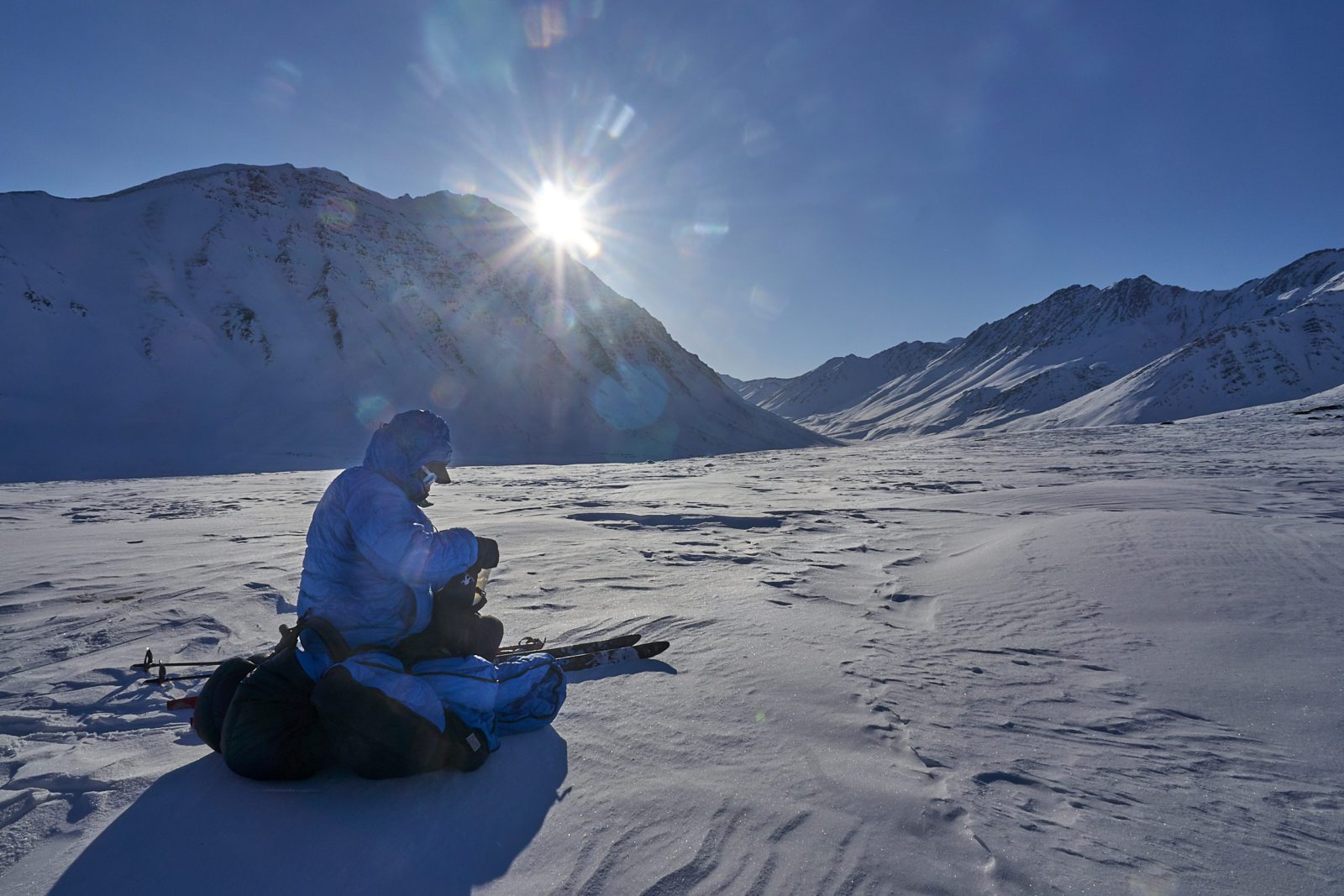
What do you think is the ideal amount of time for you to spend in/with nature?
I do best if I can be outside in the woods, the mountains, or on a river for at least an hour a day. More is better.
What does a meaningful experience in nature look like for you?
Simply being in a space can be meaningful—even just sitting in a tent and watching the sun’s angle change across a mountain feels like time well spent. But I trend toward experiencing nature by moving through it, whether on foot, on skis or a bike, or in a pack raft. The experiences in nature I would say are most important to my identity occurred on trips where I had an overwhelming sense of being “out there” and perhaps in a bit in over my head. I’m also becoming a big fan of watching my daughter giggle as she throws rocks into alpine lakes.
Describe one moment in nature/outdoors that left you with a sense of awe and connection?
My now-husband and I were hiking along a ridgeline that forms the boundary between the Kenai National Wildlife Refuge and the Chugach National Forest early one summer. We had just had dinner, and were hiking a bit further before setting up camp for the night. A rainbow arced up and over the ridge, and in the valley to one side—at a comfortable distance for all—a black bear and two cubs passed by. How magical!
Katie skied in subzero temperatures and warm afternoons during the Winter Classic in early April 2022. Her story is the first of a monthly series about how nature, getting outside, and being with land and water influences human health, resilience, connection, and purpose. Look for these stories in our monthly newsletters.


